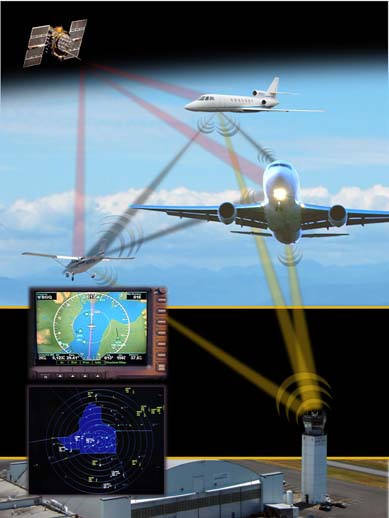 |
| ADS-B. Photo: Wikipedia |
[Avionics Today 10-16-2015] Experts are making the point clearer than ever: equip your aircraft for Automatic Dependent Surveillance-Broadcast (ADS-B) now because the deadline won’t change.
“The mandate is today,” said Arnold Oldach director of product marketing at L-3 ACSS — which has certified, mandate-compliant transponders installed across hundreds of airliners, including aircraft operated by JetBlue — speaking at the 2015 Avionics for NextGen conference in Herndon, Va. “Everyone thinks the mandate is 4.5 years out. It’s not 4.5 years out it is today.”
The “ADS-B: The 2020 Equation” panel noted that there are more than 7,000 air transport aircraft that still need to equip within the next 1,500 days — not including General Aviation (GA) or Business Aviation (BA) aircraft, which bring the number up above 30,000 aircraft that still require equipage worldwide.
“The math is pretty staggering,” said Joe Bertapelle, director of strategic airspace programs at JetBlue, who noted that the upgrade to become ADS-B compliant in many cases isn’t a simple one, and that many aircraft will need hours of Maintenance, Repair and Overhaul (MRO) work to complete the upgrade.
With thousands of aircraft left to equip before the mandate kicks in on Jan. 1, 2020, operators are skeptical that all aircraft will be able to equip, realistically, before the deadline. But manufacturers feel the goal is achievable if operators begin working heavily toward their paths to equipage now.
“Obviously, we do believe we can [equip all remaining aircraft],” said Joseph Gallo, director of air transport marketing at Rockwell Collins. “We have the feedback that says we can. Obviously, with a number of different manufacturers from different levels between [Becker Avionics], us, Honeywell and others, there’s significant manufacturer-based appeal to provide the product and I believe that the leeway and the exemption made from an [Satellite-Based Augmentation System] SBAS perspective helps in that regard given the number of limited suppliers for that piece of equipment.”
While operators may be feeling the heat to equip and the push back against the number of system options available for compliance, Oldach believes there are enough options out there from manufacturers and, with the standards in place, complete equipage should be possible by the end of the decade.
“The European mandate was pushed to 2016 and the reason for push was not because of equipment and readiness it was because of standards, [Transportation Safety Board] TSBs and [Technical Standing Orders] TSOs that hadn’t been published in a timely manner so it was really a regulation issue and it didn’t have to do with readiness,” Oldach explained.
He did admit that servicing the mix of legacy equipment necessary to make all aircraft compliant would present an issue to both Maintenance, Repair and Overhaul (MRO) organizations as well as manufacturers, but that proper planning could mitigate issues in this regard.
“You have this mix of service centers that are going to struggle to keep up with the number. It’s going to be a challenge and we are going to have to do the work but from a pure manufacturing perspective we try to look a year out to determine what kind of manufacturing capability we need for our factories,” said Oldach, noting that even manufacturers need to employ a certain amount of early planning in increasing production rates to prepare for a large push.
Experts on the panel insisted that options are out there and that with “supply-and-demand” threatening to kick in any day now, prices are set to rise for equipage costs the longer operators wait — if solutions are available at all.
“The last minute expectation that you’re going to get a product in 2019 may not be possible,” Oldach added.